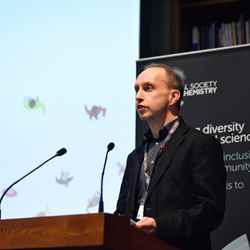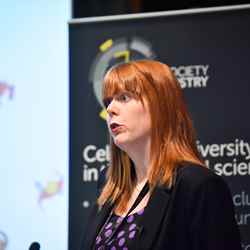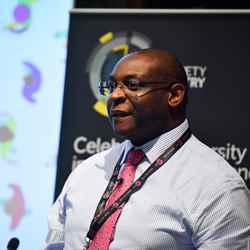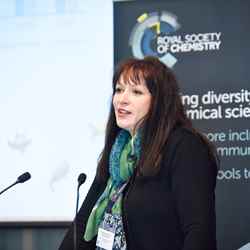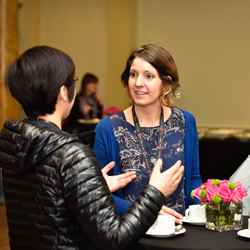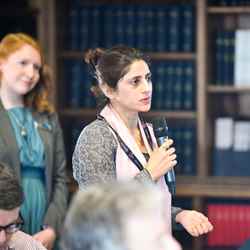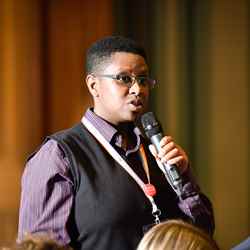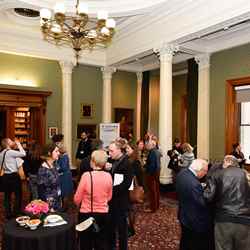Chemistry for everyone
The launch of our ‘Diversity landscape of the chemical sciences’ report celebrated progress, identified areas for improvement and captured ongoing challenges in an engaging and lively discussion.
On 15 February we celebrated the release of our new report on the ‘Diversity landscape of the chemical sciences’ with a public event at our London headquarters in Burlington House, Piccadilly.
The report draws together some of the available data and evidence about the current state of diversity in the UK chemical sciences, identifying gaps and questions that still need to be answered, and setting out commitments for our future focus as an organisation. While it points to some areas of progress, it also shows up how far we have yet to go.
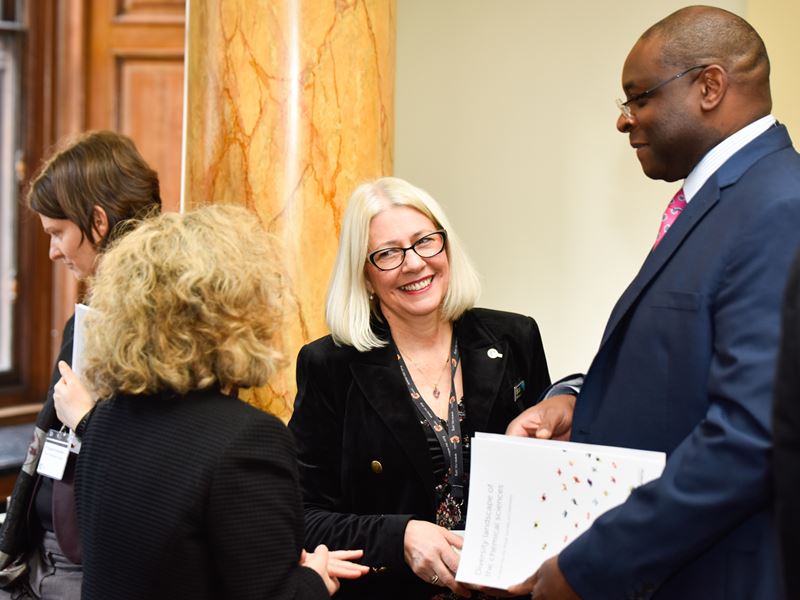
“Our building, like chemistry itself, is a beautiful blend of heritage and modernity,” said our president, Professor Sir John Holman, in his welcome address.
“You see another example of this contrast if you head upstairs to the second floor offices and stroll along the corridor of presidents’ portraits.
"They are all men, until you get to 2010 and Professor Lesley Yellowlees, the first woman to become president of the Royal Society of Chemistry.”
During her presidency, Professor Yellowlees CBE founded our inclusion and diversity committee, members of which were on hand to present key findings and highlights from the report.
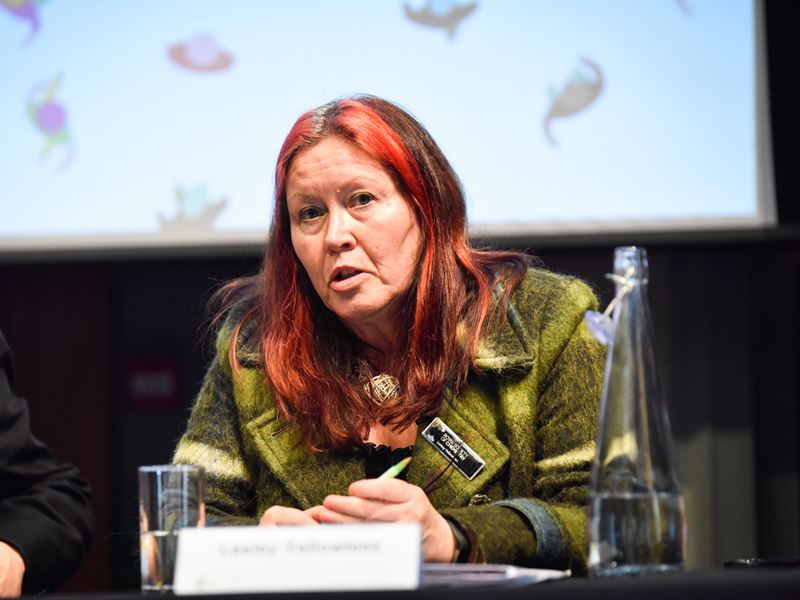
Our panel was made up of members of our inclusion and diversity committee.
- Professor Alan Armstrong, head of chemistry at Imperial College London, summarised the report’s five calls for change;
- Dr Kirsty Clode former BP plant manager, discussed issues surrounding women’s progression and the so-called ‘leaky pipeline’;
- Dr Lindsay Harding, senior lecturer at the University of Huddersfield highlighted the limitations of the data currently available;
- Dr Simon Grant, technical director at Thomas Swan Ltd, talked about learning from positive trends;
- and Professor Melissa Hanna-Brown, Technology & Innovation EU Lead for Global R&D at Pfizer, presented our recommendations to others.
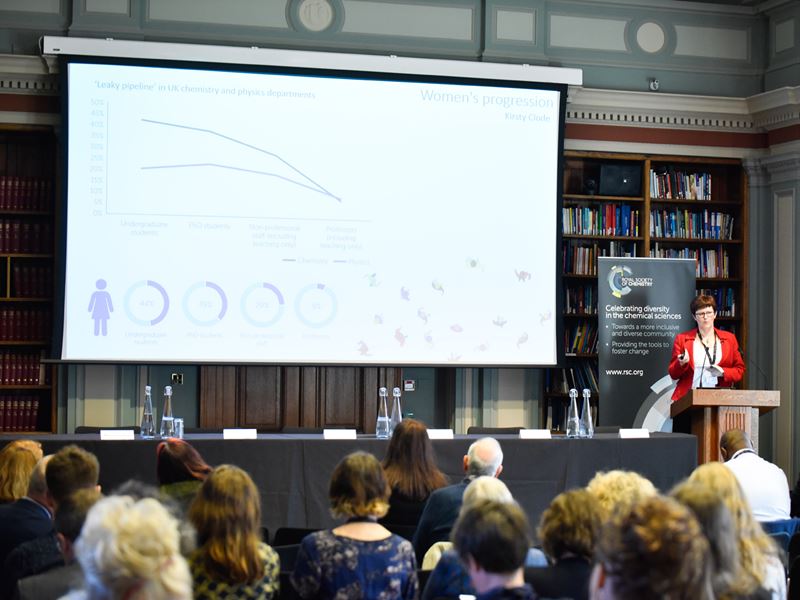
Time for action
Professor Yellowlees CBE, the committee chair, summarised the Royal Society of Chemistry’s immediate next steps and commitments, launching our new programme of research into barriers affecting women’s progression and retention in the chemical sciences.
A dominant theme of the presentations – also emphasised in the report itself – was a call for more and better quality data, particularly in the areas of mental health, disability, gender identity and socioeconomic background, as well as from industry.
“The report is an impressive collection of data, but reading it, it's obvious that there are big gaps in the evidence we have to work with," said Professor Alan Armstrong.
“Gender data has a big limitation in that it’s collected in a binary way,” said Dr Lindsay Harding. “But recent surveys show that 0.4% of the UK population don't identify with binary gender. We need to look at how we gather gender data to be more inclusive going forward.”
Opportunities for collaboration
The discussion that followed was led by some excellent questions and challenges from the audience. Jenni Dyer from the Institute of Physics asked whether stereotypes in the chemical sciences are affecting the ‘leaky pipeline’; Zamila Bunglawala from the Cabinet Office asked whether the sciences were setting hard targets for inclusion and diversity; and Lenna Cumberbatch from the London School of Hygiene and Tropical Medicine challenged the report’s strong focus on gender, and asked what activities the Royal Society of Chemistry had planned to tackle other dimensions of diversity.
One of the recommendations of the report is for more effective collaboration across the scientific community, and the panel were particularly pleased to see a diverse audience, with representatives from other learned societies, higher education institutions and industry.
“I think it's really exciting,” said Dr Lindsay Harding, on the opportunities for collaboration that the event has opened up. “Why would we all be separately inventing the wheel? There's so much best practice that we can share. If you're talking about inclusion and diversity, you need to include people and you need to be talking to people who are different from you.”
“The joint effort from my perspective is first and foremost, starting a conversation within the chemical industry,” said Dr Simon Grant. “I can thank my company Thomas Swan, and my boss, Harry Swan, who allows me to do take part in this really important committee, because it's actually affecting the way that people work. Cultural change will take a long time but we've got to start somewhere.”
We will use the report to guide and shape our next steps, with activity already planned to address mental health and LGBT+ issues.
“I believe it positions the Royal Society of Chemistry perfectly for future efforts in inclusion and diversity,” said Professor Yellowlees CBE. “Read it, digest it and most importantly, help us to make a difference.”
More information
Download the report and find out more about our developing inclusion and diversity strategy.
Check out our activity on Twitter @RoySocChem and join in with #ChemistryForEveryone.
Press office
- Tel:
- +44 (0) 20 7440 3351
- Email:
- Send us an email

